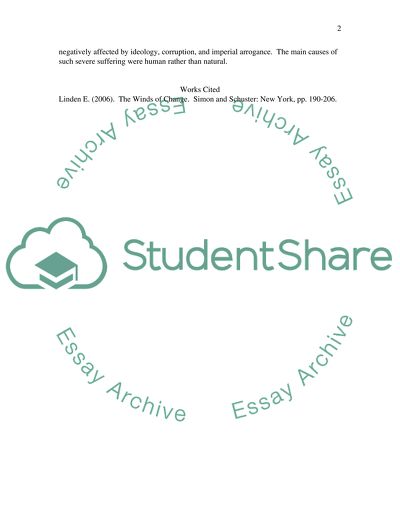What factor was ultimately more responsible for the deaths in the late Essay. Retrieved from https://studentshare.org/history/1507749-what-factor-was-ultimately-more-responsible-for-the-deaths-in-the-late-19th-century-famines-el-nino-or-human-choices
What Factor Was Ultimately More Responsible for the Deaths in the Late Essay. https://studentshare.org/history/1507749-what-factor-was-ultimately-more-responsible-for-the-deaths-in-the-late-19th-century-famines-el-nino-or-human-choices.


